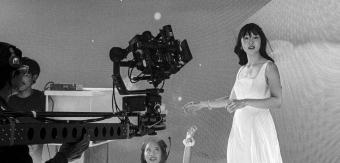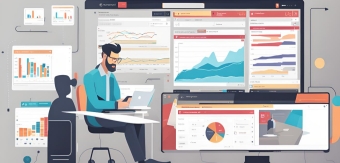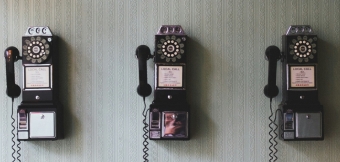In today's digital age, having an exceptional user interface (UI) is crucial for the success of any online platform or application. A well-designed UI not only enhances the user experience (UX) but also contributes significantly to customer satisfaction and engagement. Hiring the right UI designer can be a game-changer for your business. This guide will walk you through the process of finding, evaluating, and hiring a top-notch UI designer who can elevate your digital presence.
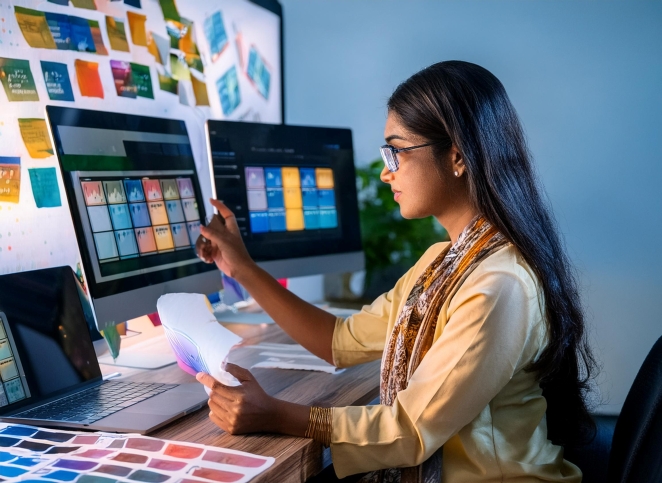
Understanding the Role of a UI Designer
A UI (User Interface) designer plays a critical role in the development of digital products. They are responsible for the visual and interactive aspects of a user interface, ensuring that users can navigate and interact with a product effortlessly. Understanding the full scope of a UI designer's responsibilities, skills, and impact on a project is essential when hiring for this role. Here, we delve deeper into what makes a UI designer indispensable to any digital project.
Key Responsibilities of a UI Designer:
Visual Design:
- Layout Creation: UI designers are responsible for the overall layout of a digital product, which includes determining the placement of elements such as buttons, menus, images, and text. This layout must be intuitive, making it easy for users to find what they need quickly.
- Color Schemes and Typography: Choosing appropriate colors and fonts is vital in creating a cohesive and appealing interface. UI designers select color palettes that align with the brand's identity and ensure readability and accessibility.
- Iconography and Imagery: Icons and images play a significant role in visual communication. UI designers create or select icons that are easily recognizable and convey the intended message without needing text.
Interactive Design:
- Button and Link Design: UI designers design buttons and links that are not only visually appealing but also provide clear feedback when interacted with, such as changing color or appearance when hovered over or clicked.
- Navigation Design: Creating an intuitive navigation system is crucial. UI designers ensure that menus, tabs, and other navigation tools are logically organized and easily accessible.
- Micro-interactions: These small animations or design elements provide feedback to users, making the interface feel more responsive and engaging. Examples include loading indicators, hover effects, and confirmation messages.
User Research and Testing:
- User Feedback Integration: Gathering and analyzing user feedback is vital in refining the interface. UI designers may conduct usability tests or surveys to understand user behavior and preferences.
- Iterative Design: Based on user feedback and testing results, UI designers iteratively improve the design to enhance usability and satisfaction.

Image Credit- Larasita Mahardhika
What to Look for in a UI Designer?
Finding the right UI designer for your project involves more than just evaluating their technical skills and experience. You need to consider a combination of attributes that will ensure they can deliver high-quality designs and work effectively within your team. Here’s a comprehensive guide on what to look for when hiring a UI designer:
Technical Proficiency
Ensure the candidate is proficient with the necessary design tools and technologies:
- Design Tools: Mastery of tools such as Sketch, Figma, Adobe XD, Photoshop, and Illustrator.
- Prototyping and Wireframing: Ability to create interactive prototypes and detailed wireframes.
- Knowledge of Front-End Technologies: While not always necessary, familiarity with HTML, CSS, and JavaScript can be beneficial for better collaboration with developers.
Understanding of Design Principles
A good UI designer should have a strong grasp of fundamental design principles:
- Typography: Knowledge of font pairing, readability, and hierarchy.
- Color Theory: Understanding of color psychology, contrast, and harmony.
- Layout and Composition: Skills in creating balanced and aesthetically pleasing layouts.
- Usability and Accessibility: Ensuring designs are user-friendly and accessible to all users, including those with disabilities.
User-Centric Approach
A user-centric mindset is essential for creating interfaces that meet user needs:
- User Research: Experience in conducting user research to gather insights and inform design decisions.
- Usability Testing: Ability to design and execute usability tests, and incorporate feedback into design iterations.
- Empathy: Understanding user pain points and motivations to create intuitive and satisfying experiences.
Red Flags to Watch For
While evaluating candidates, be aware of potential red flags that could indicate a poor fit:
- Lack of a Portfolio: An incomplete or non-existent portfolio can be a sign of inexperience or poor-quality work.
- Inconsistent Work: Significant variability in the quality or style of work across different projects.
- Poor Communication: Difficulty articulating design decisions or explaining their design process.
- Negative Feedback: Consistent negative feedback from previous employers or clients.
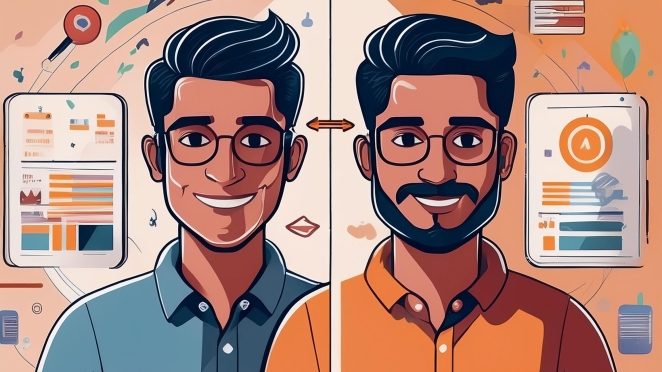
Should I hire a Freelancer or an in-house UI designer?
Deciding whether to hire a freelancer or an in-house UI designer depends on your specific needs, resources, and long-term goals. Let's explore the advantages and disadvantages of both freelance and in-house UI designers to help you determine the best fit for your organization.
Freelance UI Designer
Advantages
-
Cost-Effective:
- Lower Overhead: Freelancers typically work remotely, which means you don’t have to provide office space, equipment, or other benefits that come with hiring full-time employees.
- Project-Based Payments: You can hire freelancers on a project basis, paying only for the work done without committing to a long-term salary.
-
Flexibility:
- On-Demand Talent: Freelancers can be hired as needed, allowing you to scale up or down based on your project workload.
- Diverse Experience: Many freelancers work on a variety of projects and industries, bringing a breadth of experience and fresh perspectives.
-
Specialized Skills:
- Expertise: Freelancers often specialize in specific areas of UI design, such as mobile app design, web design, or e-commerce, providing high levels of expertise for specific needs.
Disadvantages
-
Availability and Reliability:
- Variable Availability: Freelancers may have multiple clients, making it challenging to ensure they can commit to your timelines and availability.
- Consistency: Maintaining consistency across projects can be challenging if you rely on different freelancers for different projects.
-
Integration and Collaboration:
- Limited Team Integration: Freelancers work remotely and may not integrate as seamlessly into your team, potentially affecting collaboration and communication.
- Less Control: Managing freelancers can be more challenging than in-house employees, especially regarding oversight and aligning with your company’s vision.
-
Quality Assurance:
Variable Quality: The quality of work can vary significantly among freelancers, making it essential to thoroughly vet candidates and review their portfolios.
In-House UI Designer
Advantages
-
Dedicated Resource:
- Full-Time Commitment: In-house designers are fully dedicated to your projects, ensuring consistent availability and focus on your company’s needs.
- Faster Turnaround: Being part of the team, in-house designers can often deliver faster responses and quicker turnaround times on projects.
-
Seamless Collaboration:
- Team Integration: In-house designers can work closely with other team members, facilitating better communication, collaboration, and a cohesive design process.
- Company Culture: In-house designers become part of your company culture, aligning more closely with your brand values and vision.
-
Quality and Consistency:
- Standardization: Consistency in design elements and adherence to brand guidelines are easier to maintain with an in-house designer.
- Continuous Improvement: In-house designers can continuously iterate and improve designs based on ongoing feedback and changing requirements.
Disadvantages
-
Higher Costs:
- Salary and Benefits: Hiring an in-house designer involves a higher financial commitment, including salary, benefits, and other employment-related expenses.
- Training and Development: Investing in ongoing training and development to keep the designer’s skills up to date can be an additional cost.
-
Limited Flexibility:
- Fixed Capacity: An in-house designer may not provide the flexibility to scale quickly if project demands increase suddenly.
- Burnout Risk: Relying on a single in-house designer for all your design needs can lead to burnout and decreased productivity.
-
Hiring Process:
- Time-Consuming: The process of recruiting, interviewing, and onboarding an in-house designer can be time-consuming and resource-intensive.
- Skill Match: Finding a candidate with the right mix of skills, experience, and cultural fit can be challenging.
Factors to Consider:
Project Scope and Duration:
- For short-term projects or those with specific, limited requirements, a freelance designer might be more suitable.
- For long-term projects with ongoing design needs, an in-house designer provides better consistency and commitment.
Budget:
- If budget constraints are a concern, a freelancer can offer a cost-effective solution without the long-term financial commitment of an in-house employee.
- If you have the resources to invest in a full-time position, an in-house designer can provide more consistent quality and integration.
Team Dynamics:
- Consider how well a freelancer can integrate with your existing team and workflow. If close collaboration is critical, an in-house designer might be a better fit.
- For projects that require independent work with minimal supervision, a freelancer can be a practical choice.
Expertise and Specialization:
- If your project requires highly specialized skills that are not needed on an ongoing basis, hiring a freelancer with specific expertise can be advantageous.
- For generalist design needs that span multiple projects and initiatives, an in-house designer’s versatility can be more beneficial.
Using AI for UI Design Instead of a UI Designer
AI is making significant strides in various fields, including UI design. AI-powered tools can automate repetitive tasks, generate design suggestions, and even create entire interface mockups. However, while AI can enhance and streamline the design process, it cannot fully replace the creativity, empathy, and nuanced understanding that a skilled human UI designer brings to the table. This section explores the potential and limitations of using AI for UI design, helping you decide whether to incorporate AI tools into your design workflow or rely solely on human expertise.

Image Credit- Lee Stuart Shepherd
Using Creativepool
Looking to hire an Interface (UI) Designer? Creativepool has thousands of talented members waiting to make your project shine.
There are 3 ways for you to find an Interface (UI) Designer on Creativepool.
Search and Contact
Are you looking for more control over your collaborations and the selection process? Taking a proactive approach to talent scouting involves directly searching for talent and handpicking individuals you’d like to work with.
Here’s how it works: Simply search for Interface (UI) Designers and explore the results. You’ll have the opportunity to review their projects, CVs, and resumes, allowing you to make an informed decision for your next hire.
At Creativepool, we utilize a set of indicators to rank our members based on their job titles. By exploring the top 25 ranked Interface (UI) Designers, you can efficiently discover the most talented individuals on our platform. However, don’t overlook the potential of finding untapped talent among our thousands of other skilled members.
Once you identify a professional whose style and experience align with your requirements, reach out to them directly by clicking on the message tab. If you have a specific vision for the type of creative professional you’d like to collaborate with, utilizing our search feature is the ideal approach.
Once you’ve discovered a professional whose style and experience resonate with your needs, reach out to them directly by clicking on the message tab. If you have a precise vision of the type of creative professional you’d like to collaborate with, searching is the ideal approach.
Post a studiogig
Looking for a freelance Interface (UI) Designer? The quickest way to find available talent is to advertise your brief. With us, briefs for individuals are called studiogigs.
Posting your role is a simple process. Once you submit it, we kick into action behind the scenes to find the perfect talent for your requirements. After advertising your brief, all you need to do is sit back and wait for direct applications from interested candidates
Post a job
If you are looking for a permanent Interface (UI) Designer, then advertising an Interface (UI) Designer job is the best way to attract talent. The process is identical to posting a studiogig.
Once you post your role, we’ll carefully review the advertisement details. We’ll then send job alerts to our community members who closely match your criteria, and your role will be prominently featured on our jobs board. Interested StudioGigs applicants will apply directly to you.
Whether you’re posting a job or a StudioGig, or if you’re searching for talent, rest assured that you retain full control over whom you choose to hire. There’s no obligation to select any of the applicants, and you can negotiate rates directly with them.
If you need any help on your talent hunt. You can chat with us or send us a message. We'd be happy to help.
Conclusion
Hiring a great UI designer requires a clear understanding of your project needs, a compelling job description, effective sourcing strategies, thorough evaluation processes, and a smooth onboarding experience. By following these steps, you can attract and retain top UI design talent who will contribute significantly to your project's success. Investing in a skilled UI designer is an investment in the user experience, ensuring your digital product stands out in a competitive market.


